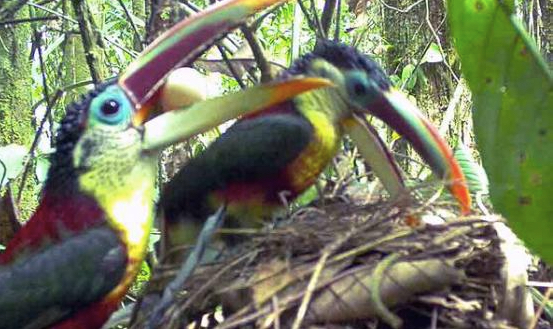Project May 13, 2015
Uphill Climb: Amazon Birds Might Survive Warming But They’re Not Out of the Woods
Country:

Biologist Gustavo Londoño wants to know why many species of Amazon birds live at very specific elevations. In the process he's come up with a novel theory about how global warming might harm them.
The birds of Manu National Park in the Peruvian Andes, like other flora and fauna there, live in ranges defined primarily by elevation. The park's steep gradient, rising from less than 1,500 feet to about 11,000 feet in about 30 miles, invites study of adjacent distinct ecosystems in a compact region. That makes Manu a strategic research site for Londoño's curiosity about why birds remain confined within specific ranges.
The question, which helps to explain the immense diversity of life, is of more than theoretical interest. As global warming threatens habitats, and the extinction of habitat-bound species, comprehending the mechanisms restricting species mobility may lead to useful public policy and new range management practices.
The Earth, scientists now know, is warming rapidly. Manu is expected to warm by more than 10 degrees Fahrenheit by the end of the century, a huge increase in a place where daily and seasonal temperature varies little. Scientists generally expect plants and animals to drift northward and upslope in response to rising temperatures. But species vary in their need and ability to move, and will move at different rates.
In this project, journalist Dan Grossman looks at what might happen when the present, stable and slowly evolved assemblage of species gets jumbled up? Londoño's early findings show optimistic results—that Manu's birds can handily survive much higher temperatures. As a result, they may not migrate uphill even as adjacent species around them do. But Londoño's research suggests that this strategy might itself threaten these birds with extinction. He is accumulating intriguing evidence suggesting that predator-prey relationships, not physical inability to withstand heat, may partly determine why birds restrict their ranges of altitude.











